L.A.’s arts district: A neighborhood in transition
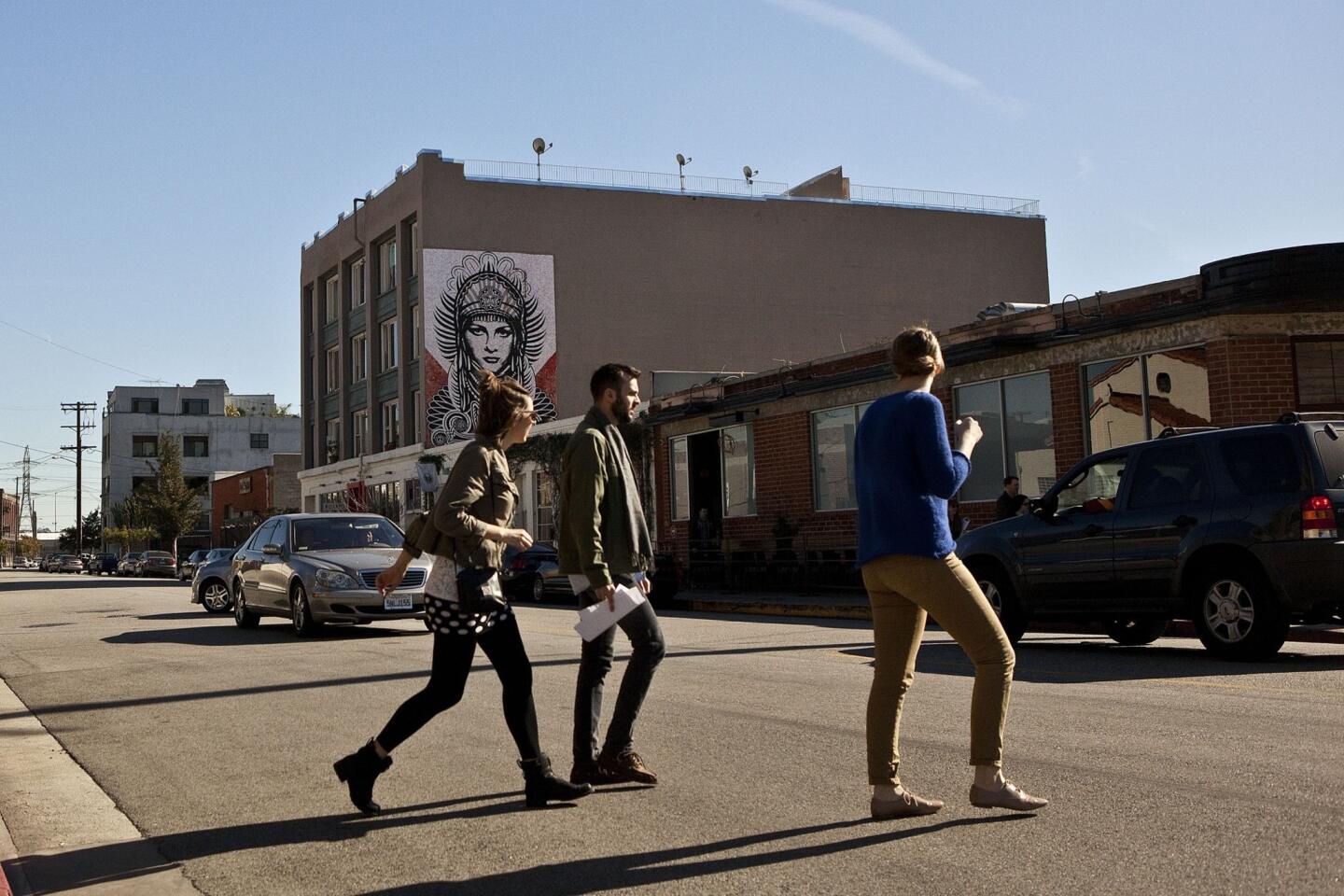
Pedestrians cross East Third Street. The neighborhood along the Los Angeles River east of downtown’s Civic Center is drawing favorable comparisons to New York’s meatpacking district, where trendy shops, restaurants, hotels and offices have taken over many industrial buildings that were strictly blue collar for decades. (Arkasha Stevenson / Los Angeles Times)
There are now more than 100 murals in the district, which runs along the Los Angeles River east of downtown’s Civic Center.
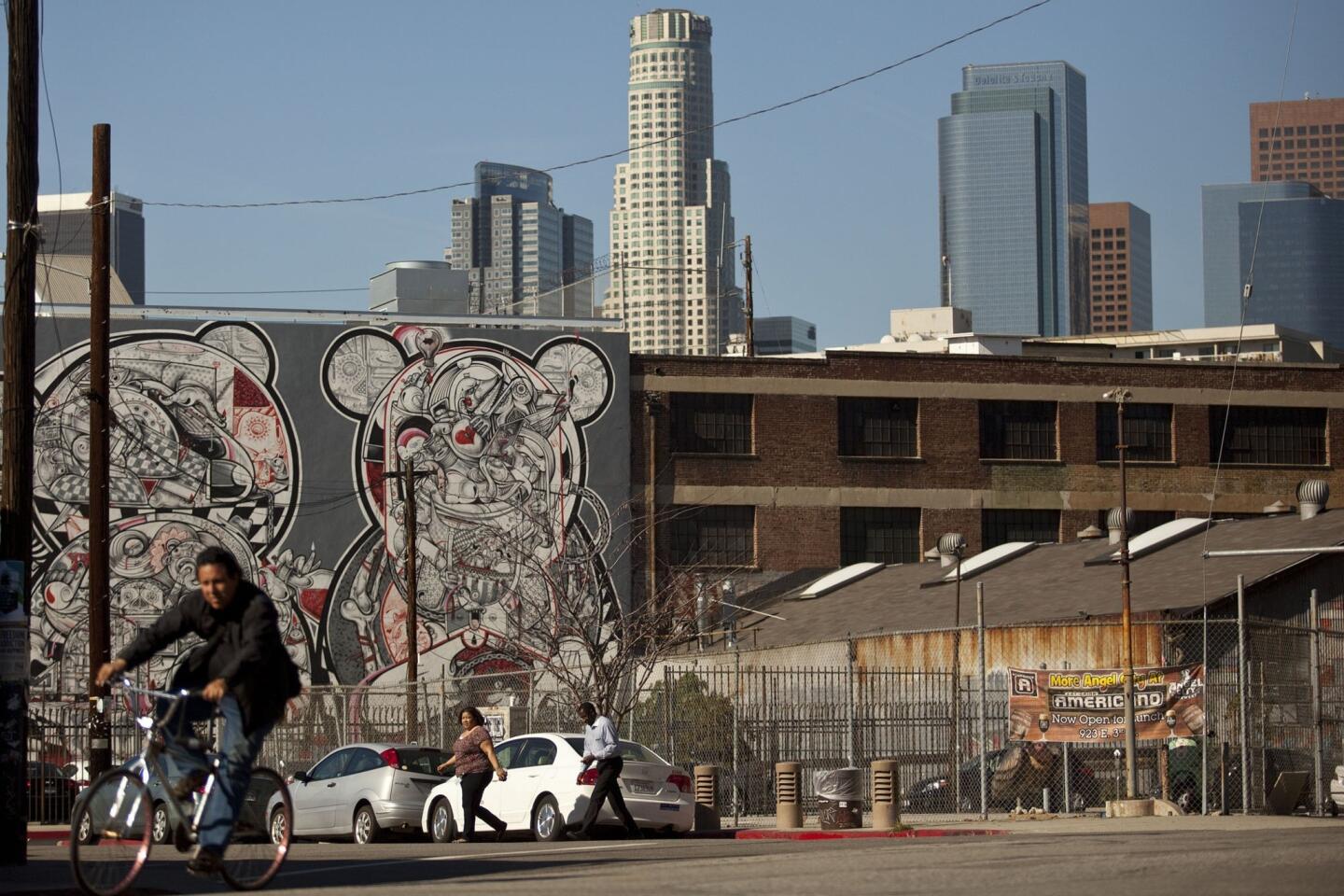
Commercial rents in the arts district can top $2 per square foot per month and can surpass the prices paid for space in ritzy high-rises visible on the downtown skyline a few blocks away. (Arkasha Stevenson / Los Angeles Times)
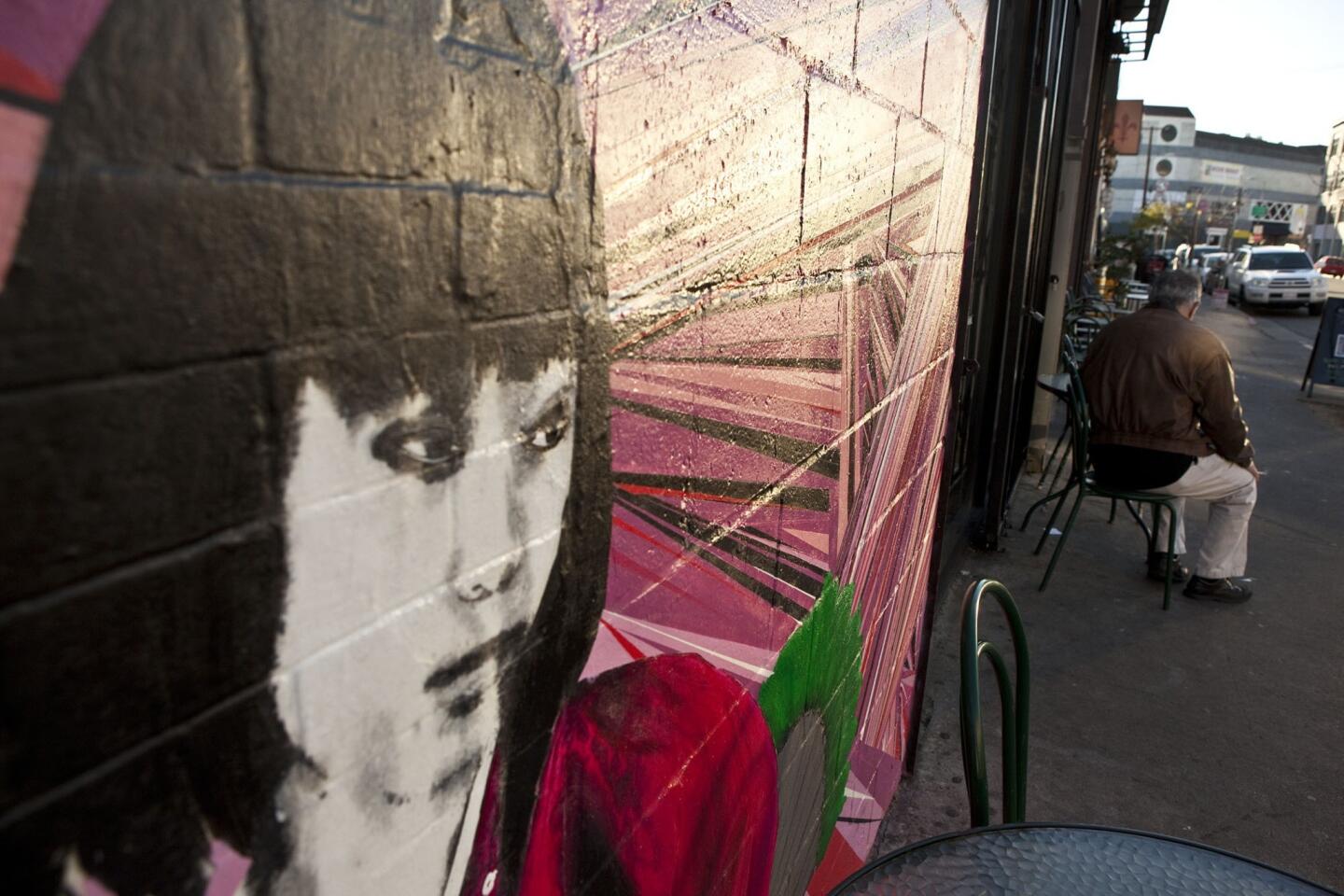
A mural becomes an identifier for its building and adds creative energy to the neighborhood, says one gallery owner in the arts district. Otherwise, it’s just a collection of run-down warehouses with cool renovated interiors. (Arkasha Stevenson / Los Angeles Times)
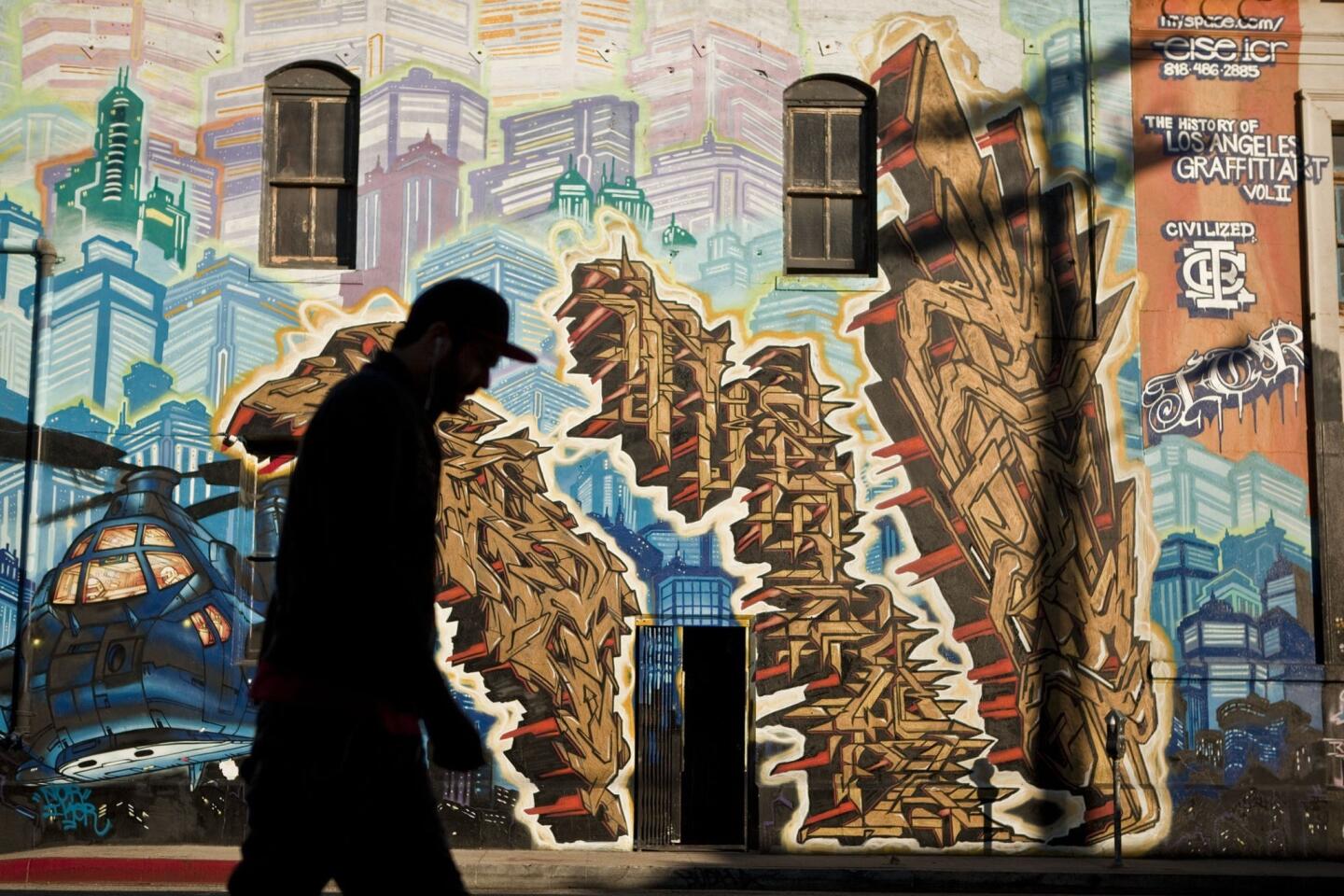
Daniel Lahoda, owner of Lala Gallery on Willow Street, works with artists to get them financial support from landlords to paint murals on the sides of buildings in the arts district. There are now more than 100 murals in the district. (Arkasha Stevenson / Los Angeles Times)
Advertisement
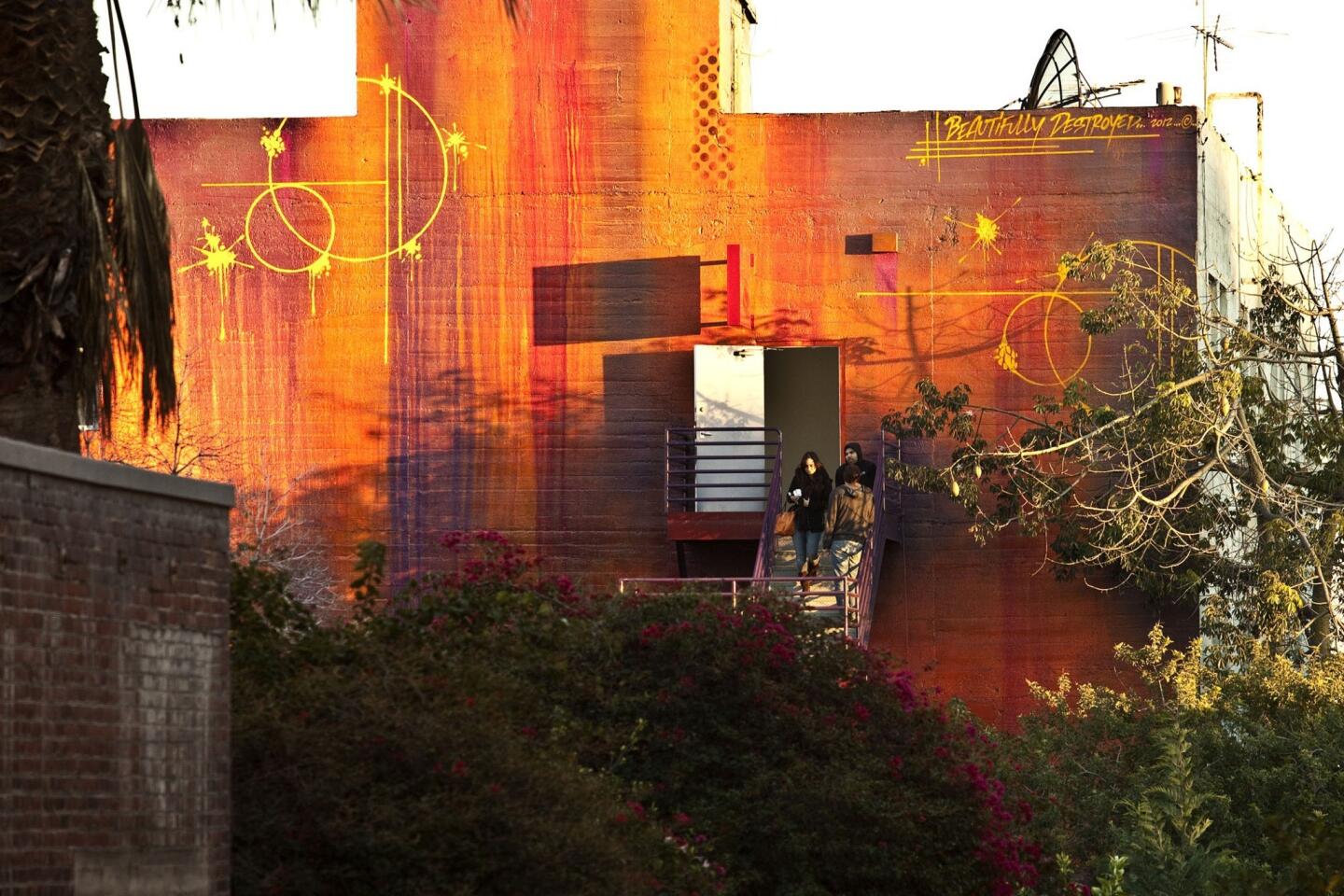
The arts district is in a sweet spot of transition for many. Vegetable wholesalers and furniture makers share streets with top-flight restaurants and front-line technology and entertainment firms. Its walls sport elaborate murals -- and foreboding razor wire. (Arkasha Stevenson / Los Angeles Times)
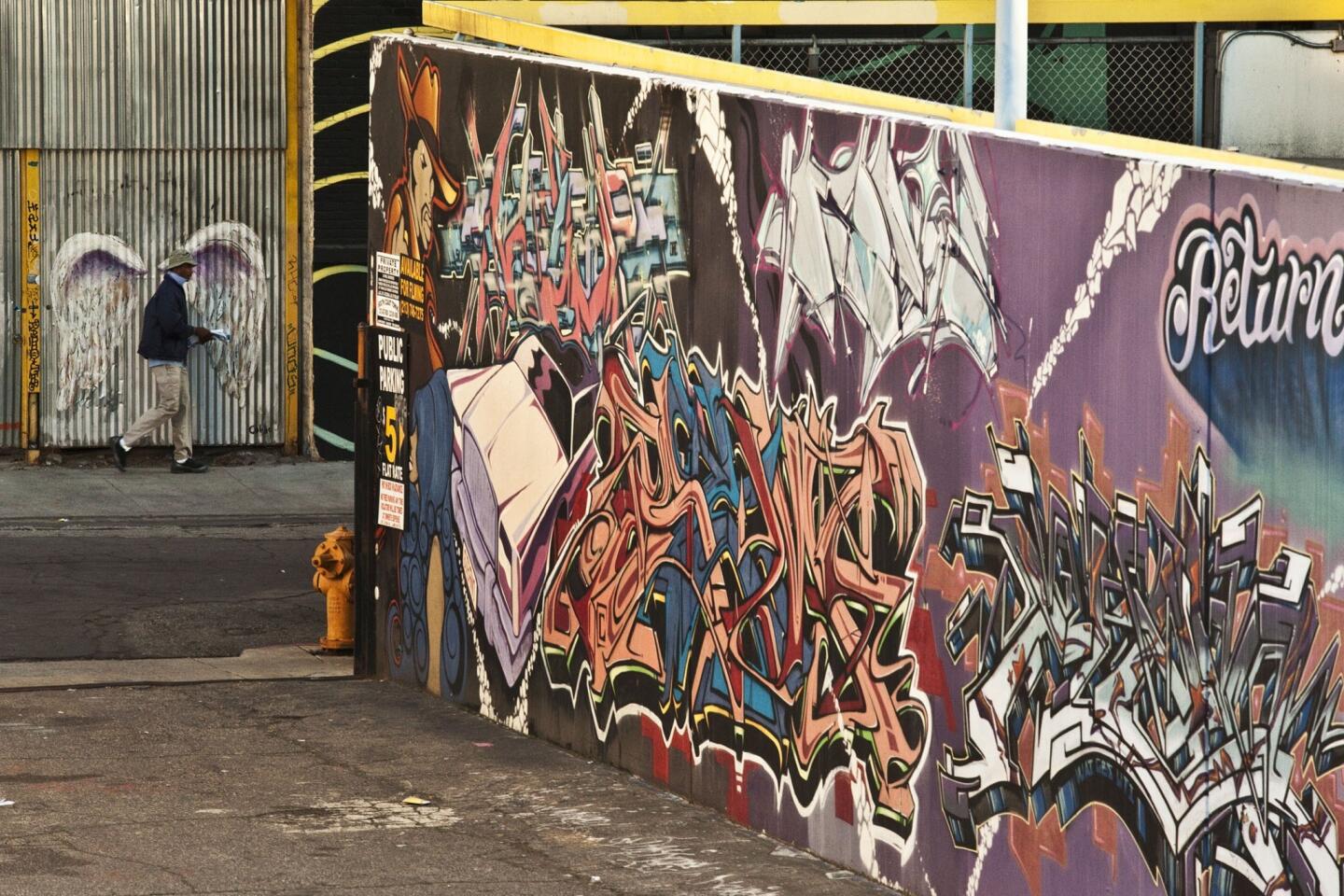
The transformation has such momentum that some of the neighborhood’s biggest supporters expect that it will be difficult to find artists in the arts district in another decade as gentrification drives up rents and pushes low-paid artists to cheaper locales. (Arkasha Stevenson / Los Angeles Times)
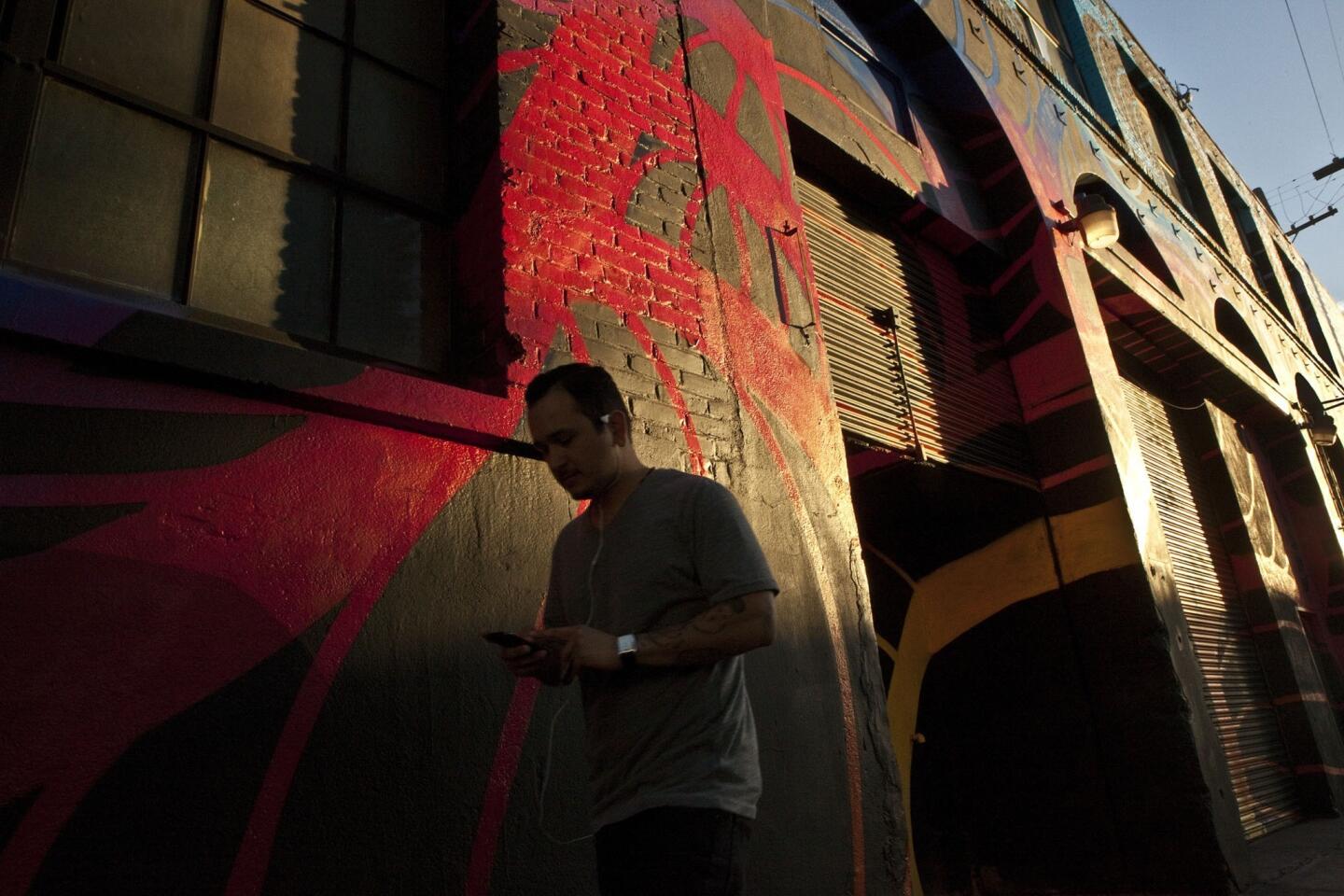
The industrial buildings in the neighborhood sometimes lack amenities. One parking space can cost as much as $100 a month to rent. Older buildings often lack air conditioning as well. (Arkasha Stevenson / Los Angeles Times)



